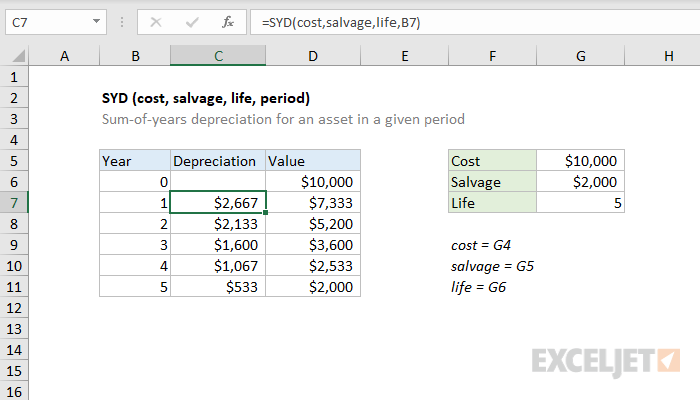Purpose
Return value
Syntax
=SYD(cost,salvage,life,period)- cost - Initial cost of asset.
- salvage - Asset value at the end of the depreciation.
- life - Periods over which asset is depreciated.
- period - Period to calculation depreciation for.
Using the SYD function
The Excel SYD function returns the "sum-of-years" depreciation for an asset in a given period. The calculated depreciation is based on initial asset cost, salvage value, and the number of periods over which the asset is depreciated.
For example, for an asset with an initial cost of $10,000, a useful life of 5 years, and a salvage value of $2,000, depreciation in year 1 can be calculated with SYD as follows:
=SYD(10000,2000,5,1) // returns $2,667
In the worksheet as shown, the formula in C7, copied down, is:
=SYD(cost,salvage,life,B7)
Sum of years calculation
In the example, the asset has a useful life of 5 years. Excel sums the years like this:
=1+2+3+4+5=15
This sum is then used in the calculation as follows: The asset loses 8000 in value over a 5 year period, so depreciation in period 1 = 5/15 * 8000 = $2,667, depreciation in period 2= 4/15 * 8000 = $2,133 , and so on. The table below summarizes the calculation in all periods.
| Year | Depreciation Calculation |
|---|---|
| 1 | =(5/15) * 8000 |
| 2 | =(4/15) * 8000 |
| 3 | =(3/15) * 8000 |
| 4 | =(2/15) * 8000 |
| 5 | =(1/15) * 8000 |












